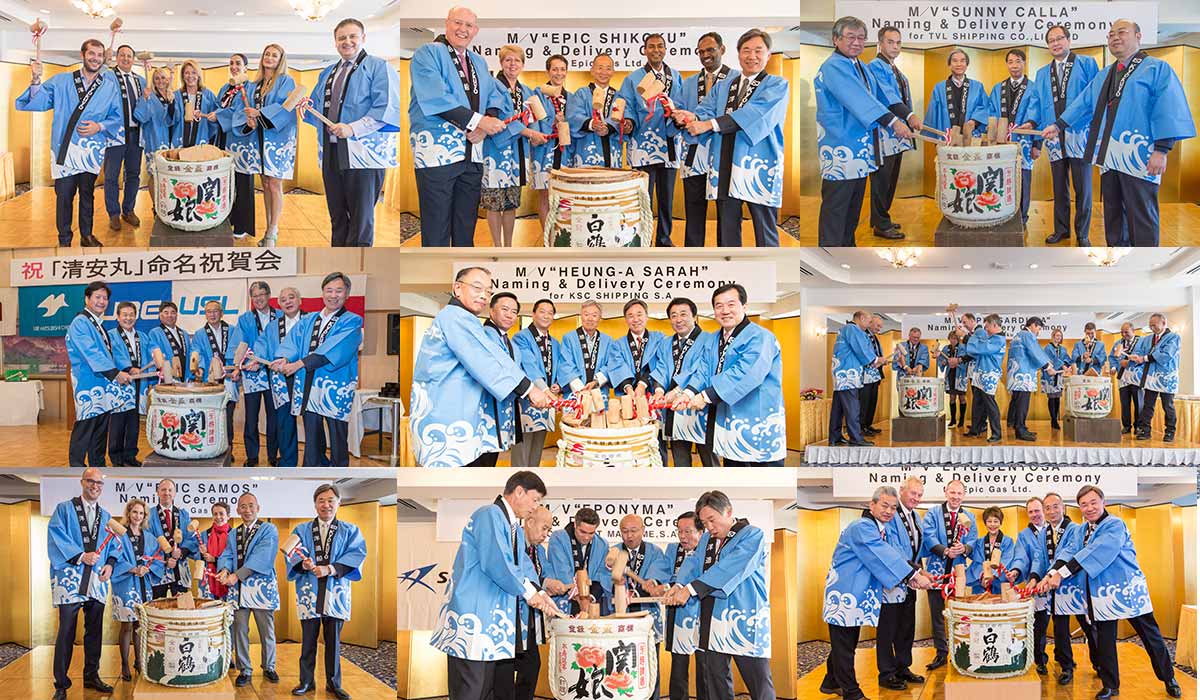BREAK007 : SENTEISAI, OR "MATSURI FOR THE LATE EMPEROR"
Hello, It has been almost 2 years since I posted the last column about our hometown! This time, I am going to introduce "Senteisai" (literal meaning : "festival for the late Emperor"), traditional festival that takes place every year between May 2 and 4 at Shimonoseki.
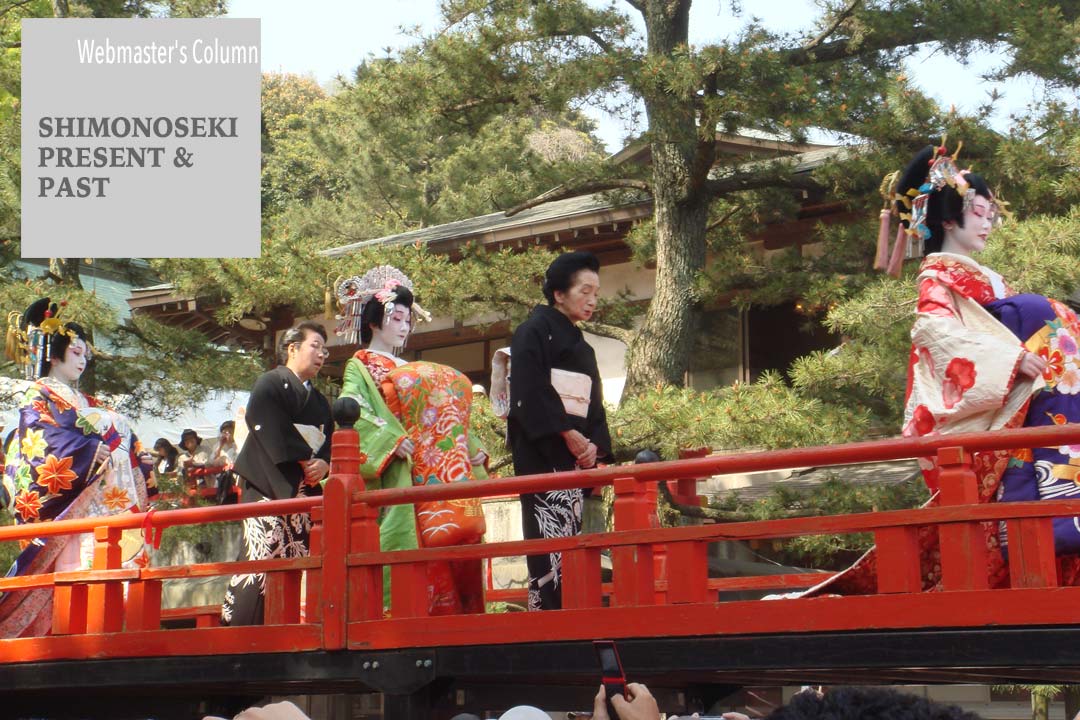
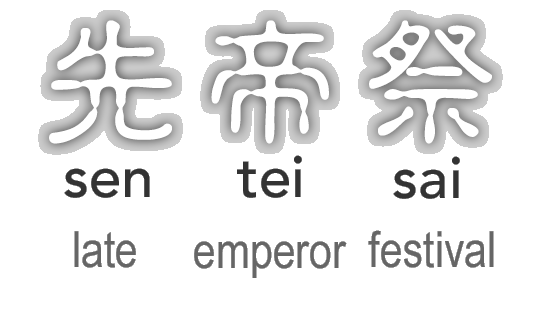
As you probably know, the last week of April and the first in May are holiday period in Japan during which a lot of tourist events - traditional or non-traditional - are organized. Our "Senteisai" is however a lit bit more than a tourist attraction. Who is the late Emperor? Why do young ladies in beautiful Kimono march in parade (see photos)? You need to know a little bit of history to see what this event is in fact. Okay, let's go back to the 1st issue of this column, where I wrote :
Shimonoseki is also a historical town. Back in the 12th century, two Samurai families struggled for dominance in Japan for decades. Once gained the hegemony in their hands, Heike family, started losing the game little by little against Genji family, and the final series of battle was commenced in 1180. The first battle in the series was fought at Kamakura, near Tokyo, then, as Heike was losing, place of battle was moved from the east to the west. In 1185, Heike was found themselves at the westernmost position in Honshu - Shimonoseki, the place for their final battle. When it was over, all the important members of Heike family, together with 8-year-old emperor they were backing up, drowned themselves in the Kanmon Channel. (...) So, A shrine was built just after the war, to console the spirit of the suicided people. Now, the shrine, Akama Jinja, is one of the top tourist spots of the town.
As you guess, the "late Emperor" stands for the one called "Antoku" who died in 1185 in the sea in front of Shimonoseki city. The festival, in original form, was created in 1186 to commemorate his death.
The climax of current Senteisai is the "Jôrô Sampai" (= court ladies worship) parade, in which participate a bunch of young girls in kimono. This event has its origin in surviving court ladies' annual visit to Akama Jinja to worship on Sentei's every deathday. The contemporary Jôrô Sampai consists of people learning Japanese traditional dance. When I was younger, I remember some Shimonoseki-born actresses also joined the parade, but not recently - perhaps because we don't have nowadays any movie star who has grown up here!
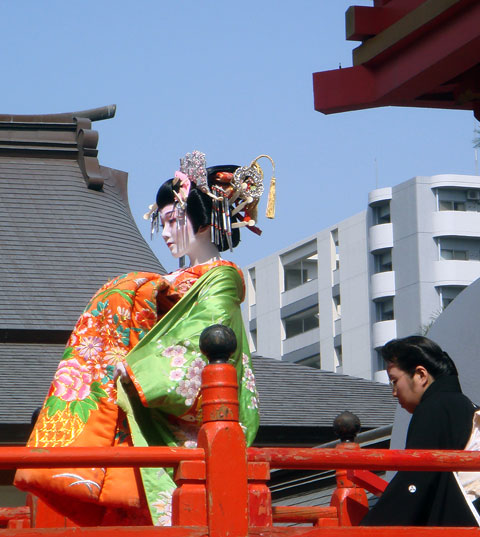
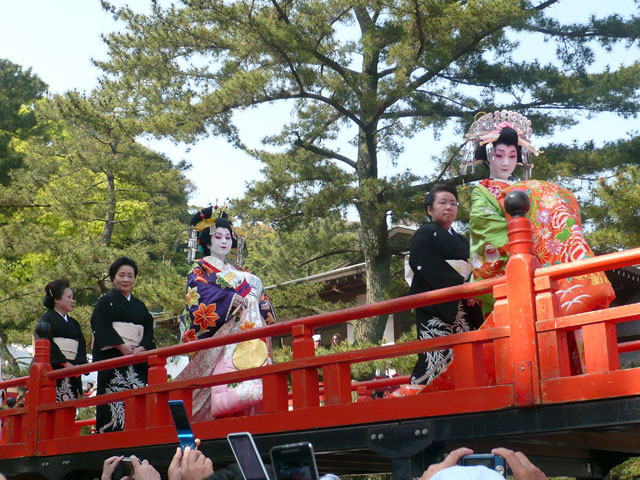
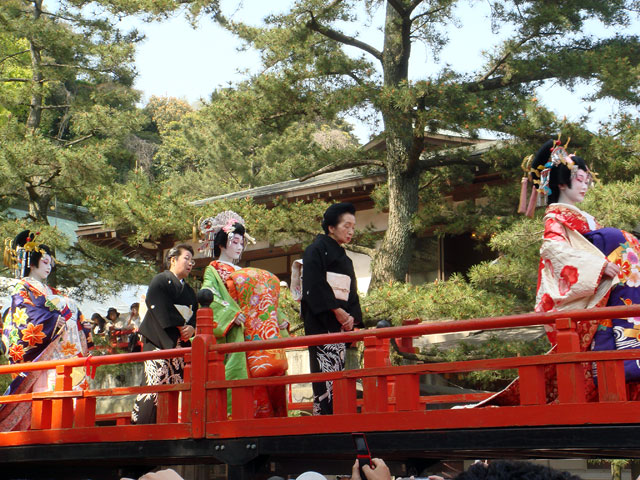
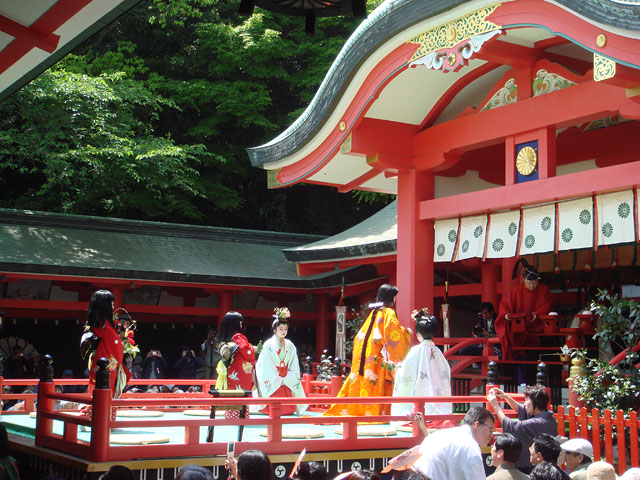
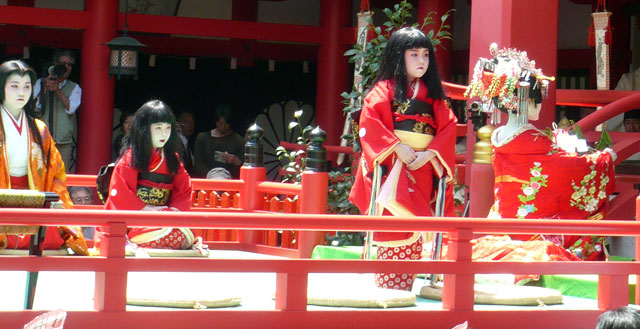

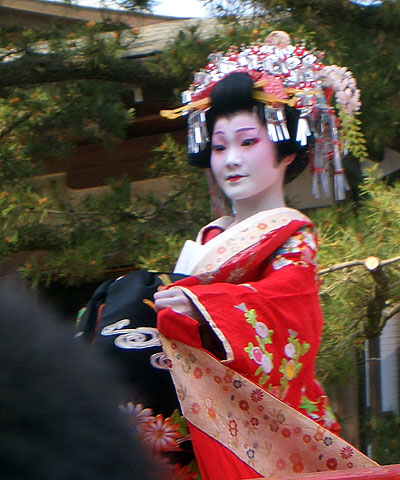
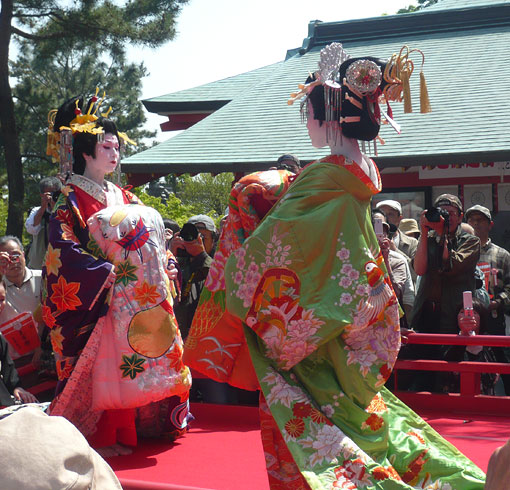
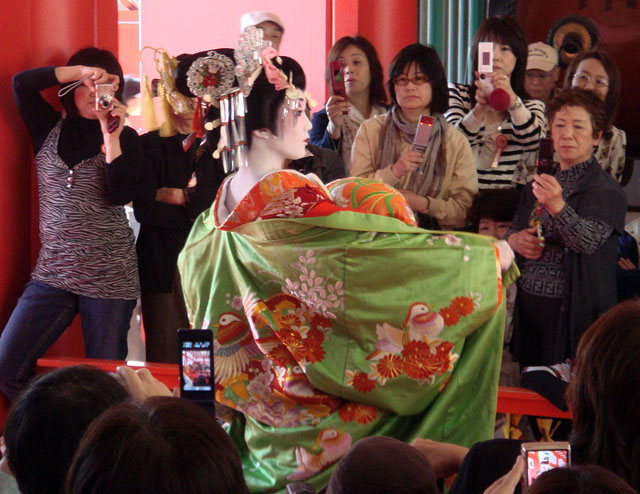
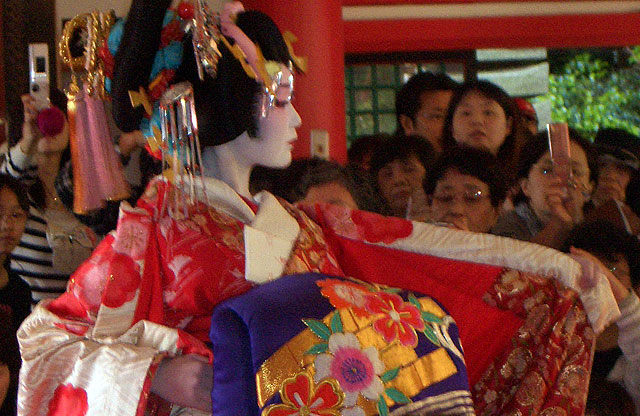
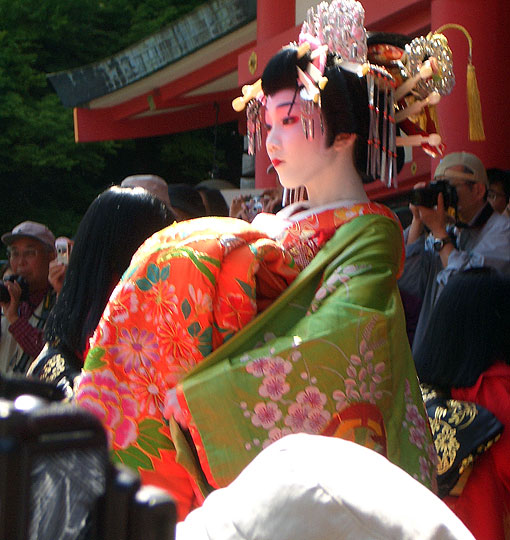
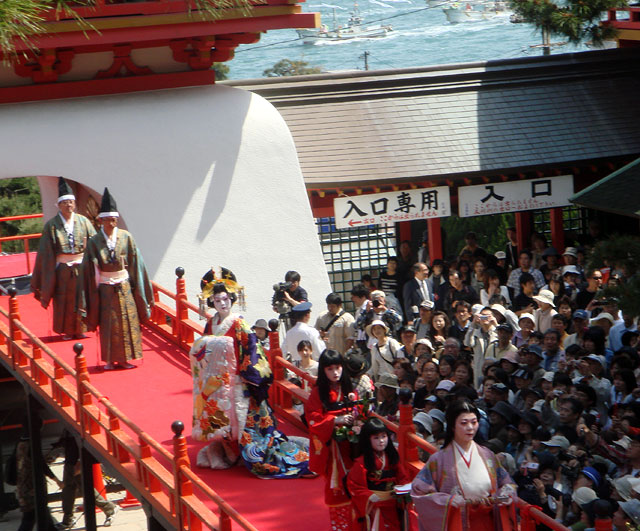

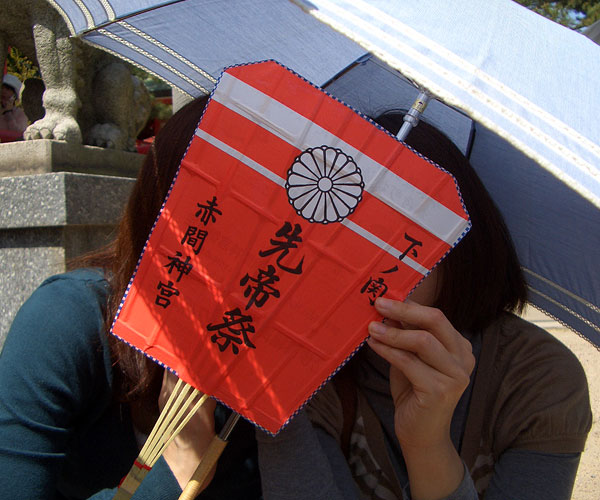
Enough small talk, enjoy the pictures taken by my colleague 'office ladies' working at geneal affairs division. See you next time!
[2010/05/25 : by singer-songwriting-webmaster Miyoshi]


